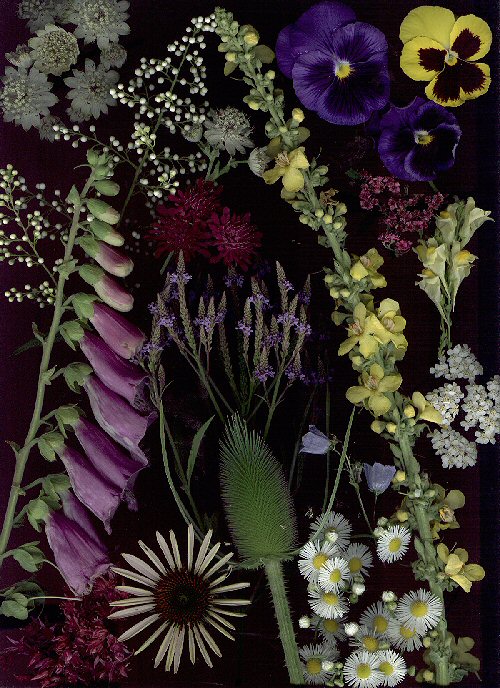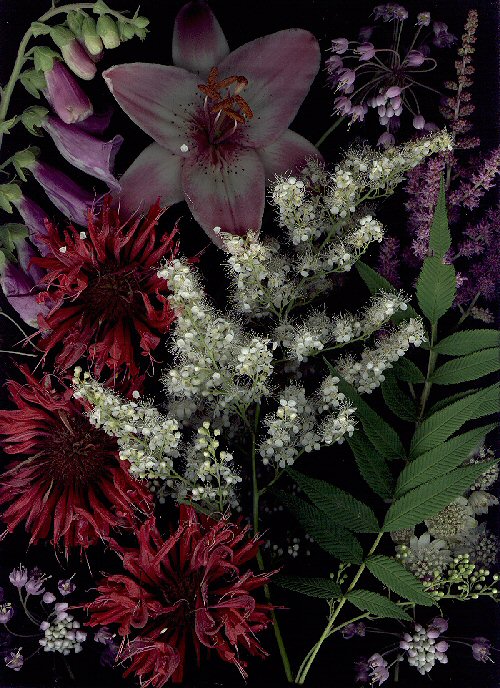I’m actually early to the party this time. With rain headed our way, I thought it good to go ahead and do this month’s scans. Click images for larger view. Apologies for lazy nomenclature and mis-IDs.
Update [7/15/2007]: As Layanee and Carol both pointed out, there’s a big article on scanning in the latest Horticulture (which has been sitting in my huge stack of unread gardening magazines). It’s by Ken Druse, so you know it’s gotta be good. (Print’s not dead. Sign up for a free issue of Horticulture.)
Monarda, Asian lily, sedum, spiraea, lychnis, Rosa ‘Cuisse de Nymphe’, allium, daucus, stachys (the other one), Scotch thistle.

Astrantia, viola, sorbaria (about to pop), verbascum, sedum, that weed that looks like fried eggs, digitalis, Verbena bonariensis, Verbena hastata, coneflower, teasel, rock garden campanula?, wild composite (aster?).

Digitalis, Asian lily, allium, astilbe, monarda, sorbaria (popped), astrantia.









 Yesterday was Frida Kahlo’s 100th birthday. Today’s NY Times has
Yesterday was Frida Kahlo’s 100th birthday. Today’s NY Times has  Slow new day — what with only commutations of felony sentences and such to report on. So the NY Times reports on a new 708-page tome about the modernization of Europe: The Pursuit of Glory – Europe 1648-1815. (
Slow new day — what with only commutations of felony sentences and such to report on. So the NY Times reports on a new 708-page tome about the modernization of Europe: The Pursuit of Glory – Europe 1648-1815. (